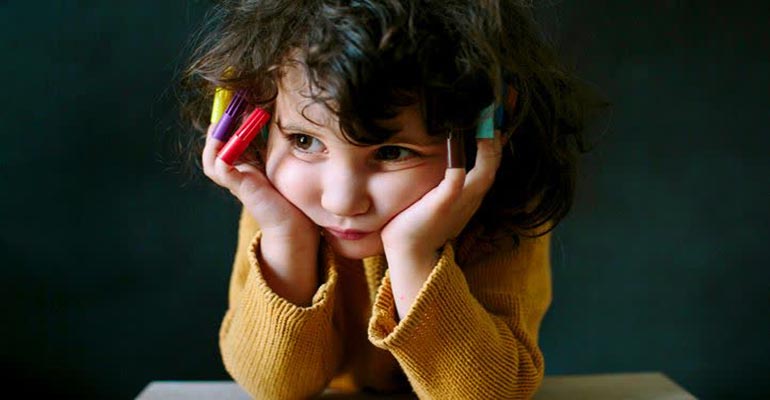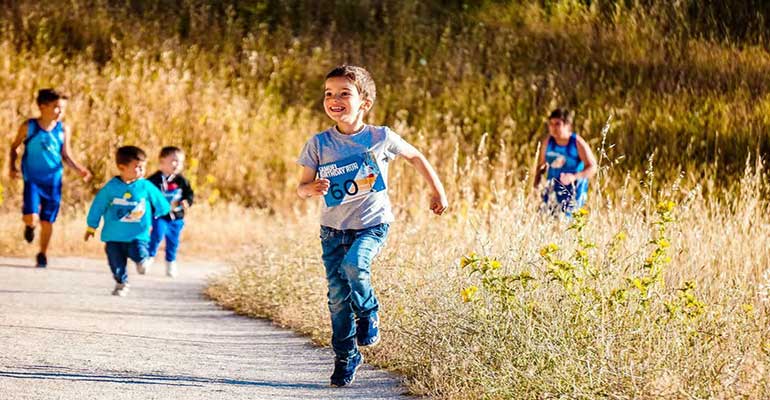
Sort By: :
Newest
- Newest
- Most viewed
type
Article Title
- Article Title
- Author
- Subject
- Keywords
The appropriate age to teach children to read
The appropriate age to teach children to read
Most children start learning some letters in their third year.
They have the ability to recognize most letters between the ages of four and five.
Children at this age can learn using a variety of methods.
This is done through the use of visual methods such as picture books and coloring books that teach letters,
Your child will love spending some quality time pointing his finger at the letters he has learned.
Children as young as three years old will be able to understand the idea that all books containing words and text are made up of letters
Children playing outside - Playing outside the home has benefits and risks for your child
Children playing outside - Playing outside the home has benefits and risks for your child
Children who spend more time playing outdoors become more outgoing and intelligent.
They have a stronger sense of responsibility than others and become calmer and more balanced.
Some potential benefits for children playing outdoors:
Encouraging children to love nature
Improve social skills
It strengthens the muscles
Improve children's concentration
Increase creativity
The appropriate age to teach children to read 3
The appropriate age to teach children to read
Most children start learning some letters in their third year.
They have the ability to recognize most letters between the ages of four and five.
Children at this age can learn using a variety of methods.
This is done through the use of visual methods such as picture books and coloring books that teach letters,
Your child will love spending some quality time pointing his finger at the letters he has learned.
Children as young as three years old will be able to understand the idea that all books containing words and text are made up of letters
The appropriate age to teach children to read 4
The appropriate age to teach children to read
Most children start learning some letters in their third year.
They have the ability to recognize most letters between the ages of four and five.
Children at this age can learn using a variety of methods.
This is done through the use of visual methods such as picture books and coloring books that teach letters,
Your child will love spending some quality time pointing his finger at the letters he has learned.
Children as young as three years old will be able to understand the idea that all books containing words and text are made up of letters
The appropriate age to teach children to read 5
The appropriate age to teach children to read
Most children start learning some letters in their third year.
They have the ability to recognize most letters between the ages of four and five.
Children at this age can learn using a variety of methods.
This is done through the use of visual methods such as picture books and coloring books that teach letters,
Your child will love spending some quality time pointing his finger at the letters he has learned.
Children as young as three years old will be able to understand the idea that all books containing words and text are made up of letters
The appropriate age to teach children to read 6
The appropriate age to teach children to read 6 The appropriate age to teach children to read 6The appropriate age to teach children to read 6
The appropriate age to teach children to read 7
The appropriate age to teach children to read 7The appropriate age to teach children to read 7
The appropriate age to teach children to read 8
The appropriate age to teach children to read 8The appropriate age to teach children to read 8The appropriate age to teach children to read 8The appropriate age to teach children to read 8
Helping Your Child Transition to Sleeping in Their Own Bed: Practical Advice for Parents
Helping Your Child Transition to Sleeping in Their Own Bed: Practical Advice for Parents
Transitioning your child to sleep in their own bed is a significant milestone that can come with its challenges. Here are some effective strategies to help ease this transition for both you and your child:
How to Get Your Child to Sleep in Their Own Bed: Tips and Guidance for Mothers
Getting your child to sleep in their own bed can be a significant challenge for many mothers, but with some tips and guidance, this process can become easier and more successful. Here are some methods that can help you achieve this goal:
How to Help Your Child Walk: Tips and Guidance for Mothers
The stage when a child learns to walk is one of the most exciting and important phases of their growth. This period can be full of challenges and anxiety, but it is also a special time filled with joy and anticipation. Here are some tips and guidance to help you support your child during this crucial stage
Why Doesn't Your Child Have Friends? Pay Attention to These Factors
Introduction
Forming friendships is an essential part of children's social and emotional development. If your child is experiencing isolation or lacks friends, there may be several reasons affecting their social situation. In this blog post, we'll explore common factors and provide guidance on how to support your child in building meaningful connections.
Common Reasons Why Children May Lack Friends
How to Foster Children's Social Skills
Children need to develop social skills that will serve them throughout their lives, from preschool and school to various aspects of adulthood. These social skills encompass cognitive, emotional, and interpersonal abilities. By nurturing these skills, parents can empower their children and help them thrive. Here are some strategies to enhance a child's social skills:
The Importance of Physical Activity for Children and How to Encourage Them to Exercise
Physical activity plays a vital role in children's development, benefiting not only their physical health but also their mental and social well-being. Exercise helps strengthen muscles, improve balance and flexibility, and increase energy levels. Additionally, physical activities reduce stress and anxiety, promoting happiness and psychological comfort.
How to Teach Children Responsibility and Independence from an Early Age
Teaching children responsibility and independence from an early age is crucial for fostering balanced and well-rounded development. Start by assigning simple, age-appropriate tasks that match the child's maturity level. This can begin with daily chores like tidying up toys or helping set the table. Such tasks instill a sense of responsibility and teach children the importance of commitment.
Healthy Foods for Your Kids: A Strong Start to a Healthy Life
Healthy nutrition for children is the foundation for their proper growth and mental and physical development. Ensuring they receive balanced nutrition can be challenging, but with some tips and simple recipes, mothers can ensure their children get all the essential nutrients they need.
Setting Clear Boundaries and Teaching Discipline in a Healthy Way
Dealing with children's behavioral challenges is one of the most crucial aspects of parenting that requires special attention from mothers. Setting clear boundaries and teaching discipline in a healthy way can help raise children who can interact positively with their environment and take responsibility for their actions.
Organizing Your Child’s Sleep Schedule: Effective Tips for Better Sleep
Ensuring quality sleep for children is not a luxury but a crucial element in their healthy growth and development. Children who get enough sleep are more focused, emotionally stable, and less likely to fall ill. Therefore, establishing a consistent sleep schedule is one of the most important tasks that parents should focus on. In this blog, we’ll explore some practical tips to help you organize your child’s sleep better.
Teaching Your Child the Skill of Sharing: Effective Ways to Encourage Sharing
Sharing is one of the most important social skills that children need to learn at an early age. It’s not only a useful skill for interacting with others, but it also fosters empathy and the ability to work as part of a team. However, teaching children how to share can be challenging. In this blog, we’ll explore some effective ways to help your child learn the skill of sharing.





















